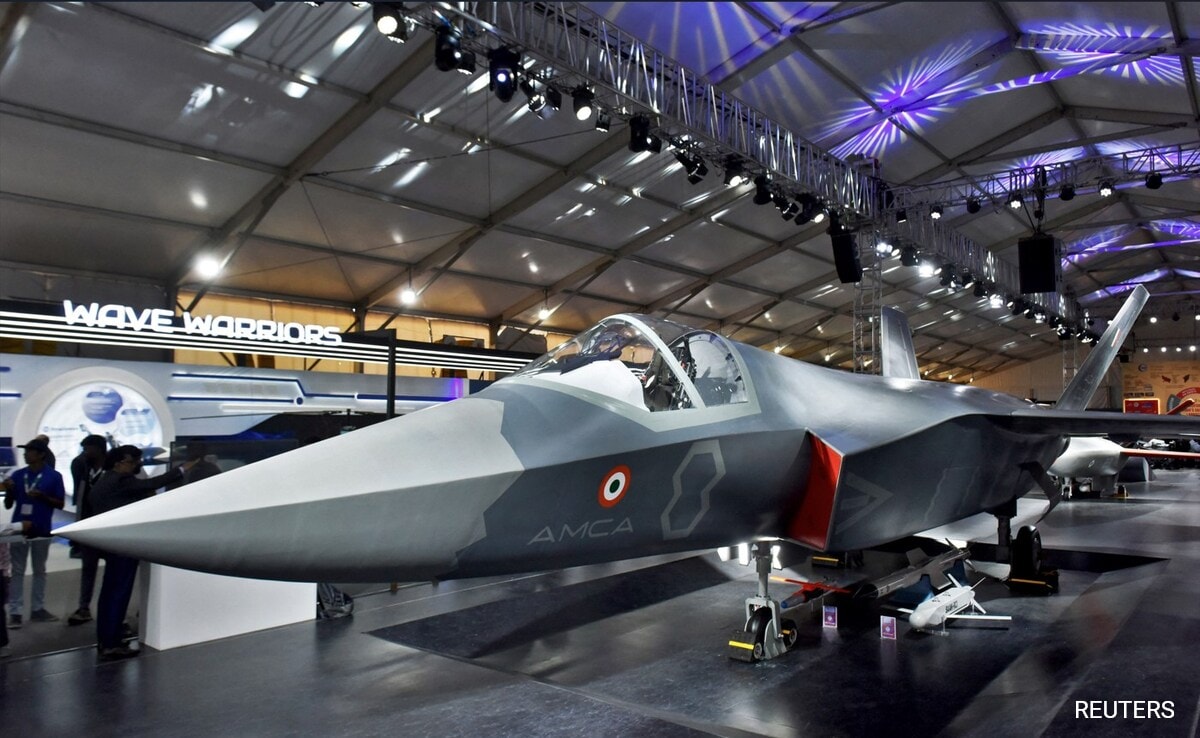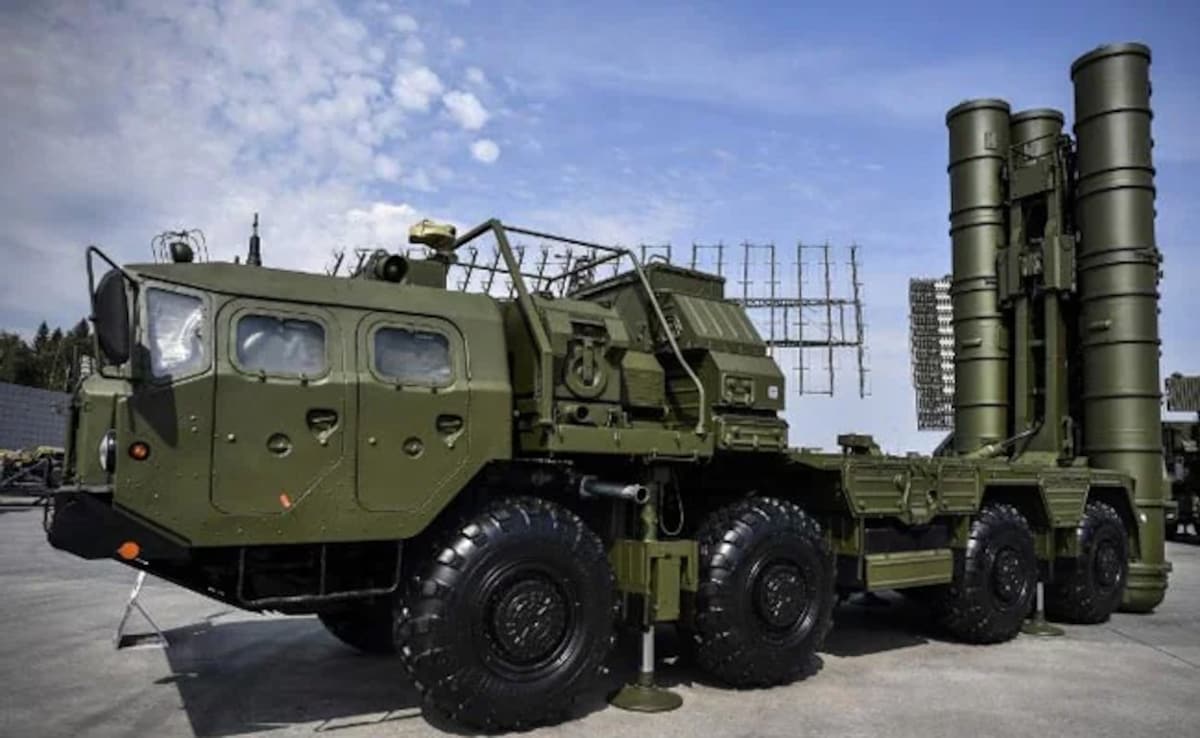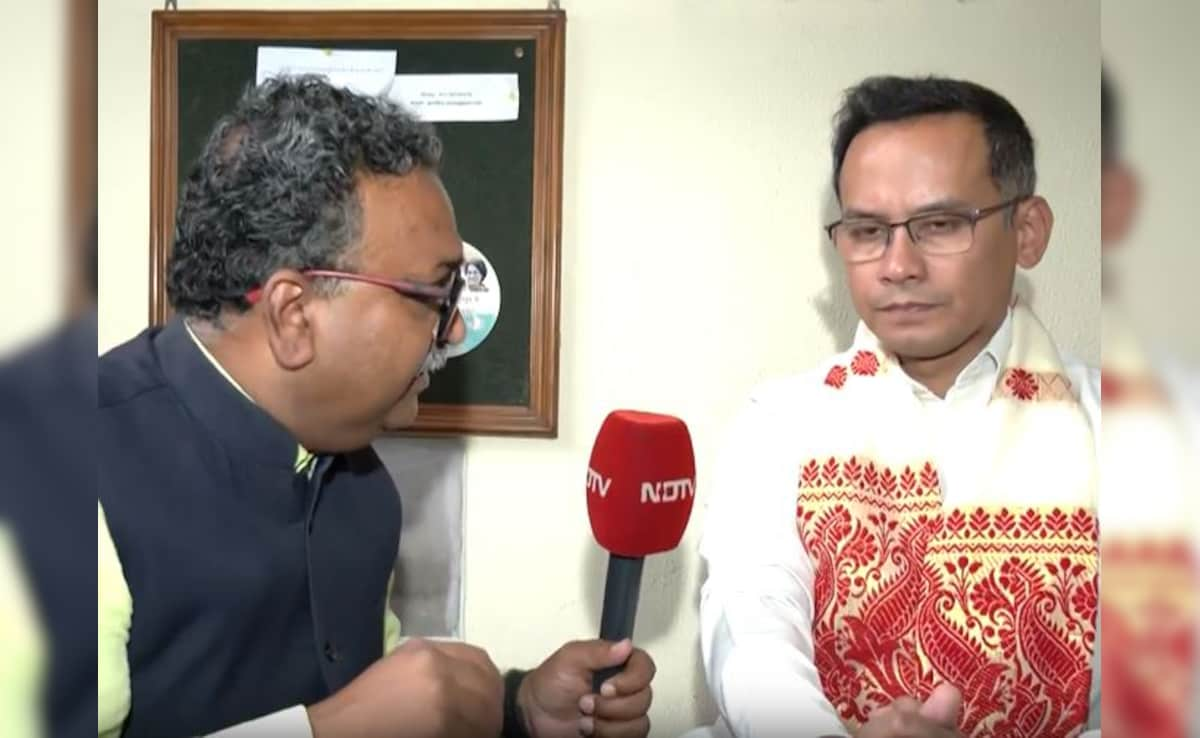India has taken a step forward in the direction of building an indigenous fifth-generation stealth fighter jet, an ambitious project aimed at bolstering the Indian Air Force’s air power capability. Defence Minister Rajnath Singh approved the “execution model” for the Advanced Medium Combat Aircraft (AMCA) that will be developed by Aeronautical Development Agency (ADA) in cooperation with industry partners.
Former IAF chief, Air Chief Marshal RKS Bhadauria (Retd.), spoke to NDTV, explaining the significance of AMCA, against the backdrop of increased focus on bolstering air power, especially after Operation Sindoor, when Indian fighter jets, drones struck terrorist infrastructure in Pakistan and Pakistan Occupied Jammu and Kashmir to avenge the Pahalgam attack.
The Centre’s move highlights a paradigm shift in India’s approach to building fighter jets from state-run Hindustan Aeronautics Limited (HAL) to allowing private firms to bid for a chance to build prototypes.
Ex-IAF Chief On Public-Private Partnership
“I have seen this development today with great interest, and there was a lot of debate on this issue on AMCA in terms of participation of the private sector along with the HAL…it’s a huge leap of faith in terms of what the Ministry of Defence (MoD) has demonstrated their faith in the private sector to be able to take up such kind of project. And this is the top-end project that the industry is going to handle,” ACM RKS Bhadauria said.
The former IAF chief said he sees this as an opportunity for the private sector to come up and demonstrate their ability to deliver.

Photo Credit: pib.gov.in
The AMCA will feature advanced stealth coatings, internal weapons bays similar to the Su-57, F-22 and the F-35, a fighter jet the US symbolically opened for sale to India earlier this year. AMCA will use AI, Manned-Unmanned Teaming (MUM-T) – A Combination of manned fighter jets and drones for missions, next-generation AESA radars.
For the first time, a 1:1 scale model of the Advanced Medium Combat Aircraft (AMCA) was on display at the India Pavilion of the Aero India 2025 air show in February this year. The AMCA will be a single-seater, twin-engine fifth-generation fighter jet.
In March last year, the Cabinet Committee on Security (CCS) cleared the project to design and develop AMCA. The mass production of the aircraft is expected to begin by 2035, and at least 120 aircraft are expected to be delivered.
The Centre said the “Approach provides equal opportunities to both private and public sectors on a competitive basis. They can bid either independently or as joint venture or as consortia. The entity/bidder should be an Indian company compliant with the laws and regulations of the country.”
No private company in India has led the development and manufacturing of a fighter aircraft. The state-run HAL has built helicopters and the LCA Tejas fighter jet. However, Tata Advanced Systems Limited (TASL) is the only private company that is involved in the manufacturing and assembly of a defence aircraft – the Airbus C295 transport aircraft in India.
Operation Sindoor And China-Pakistan Axis
The decision comes against the backdrop of increased focus on bolstering air power, especially after Operation Sindoor when Indian fighter jets and drones struck terrorist infrastructure in Pakistan and PoK on May 7, followed by an aerial engagement involving drones, missiles, rockets from Pakistan to target Indian military bases and cities and India’s multi-layered air defence system thwarting all attempts from Pakistan.
China has been supporting Pakistan with fighter jets. The Chinese J-10 and JF-17 4th-generation fighter jets were used by Pakistan during the 100-hour battle, along with air defence systems like HQ-9 and HQ-17, air-to-air beyond visual range PL-15 missiles and Chinese Airborne Early Warning and Control Systems (AWACS).
China is reportedly expediting its sale of the J-35 5th-generation stealth fighter to Pakistan, which could tilt the balance of air power in the subcontinent.
Also read: China Unveils Its Second 5th-Gen Fighter, Looks Exactly Like This US Jet
To a question on whether lessons from Operation Sindoor had something to do with the decision on AMCA, the former air chief said, “A lot of discussion on this matter had been going on to the best of my knowledge. The fact that this announcement was not made doesn’t mean that in the last year, after the AMCA project was cleared, no work has happened. ADA has been fully into it in terms of design and development work that needed to go on. But this decision was important.”
ACM Bhadauria said, “What China has done and what Operation Sindoor has changed in terms of how we look at standoff capability in terms of survivability in a contested environment.” He added that the decision on the announcement is linked, and the government is indicating how serious it is to “energise the indigenous ecosystem in defence production and has indicated a show of faith in the system.”
Stealth Fighters In A Contested Space
China conducted test flights of its two 6th-generation fighter jets last year, and its support for Pakistan with the J-35 can change a contested battle space, similar to what the world saw during Operation Sindoor.
The former IAF chief gave his take on the deployment of stealth fighters in an engagement like Operation Sindoor and said, “The moment you have the kind of contested environment that we have and Pakistan having the latest in terms of technologies…then from sensors, to survivability, stealth is at the center stage in terms of any aircraft that is going to take part in combat or offensive operations. Stealth is important to delay detection and be able to do the missions in very hostile environments. That’s the best bet to have a real stealth aircraft.”

Aeronautical Development Agency (ADA) graphic explaining features of AMCA
Photo Credit: ada.gov.in
In a changing airspace where close combat has largely moved toward the use of long-range BVR missiles, increasing the distance from 300 metres of close combat many decades ago to over 200 kilometres to striking targets.
ACM Bhadauria explained the change and said, “What we trained on and what we started with was close combat, attacking targets from close, doing air-to-ground from close. And thereafter, the sensors, the weapons and the distances just kept increasing. I think a huge responsibility today for the pilots in the cockpit is to be updated and be technologically savvy…In a networked environment, to handle data from weapons, sensors and data not only coming from the ground, in future from satellites, everything is going to be fed to the pilot…In terms of his capability and what he is expected to do is a huge change.”




